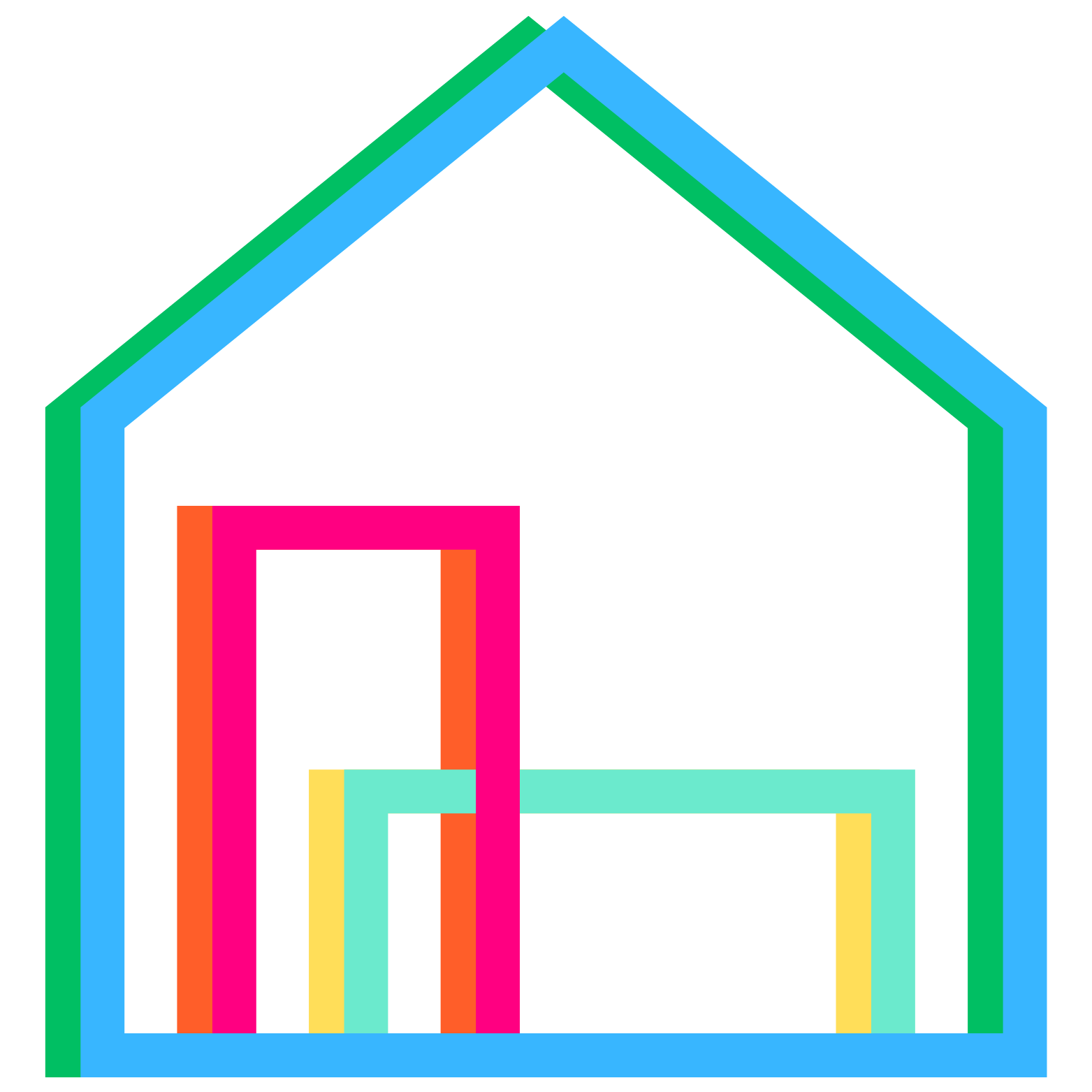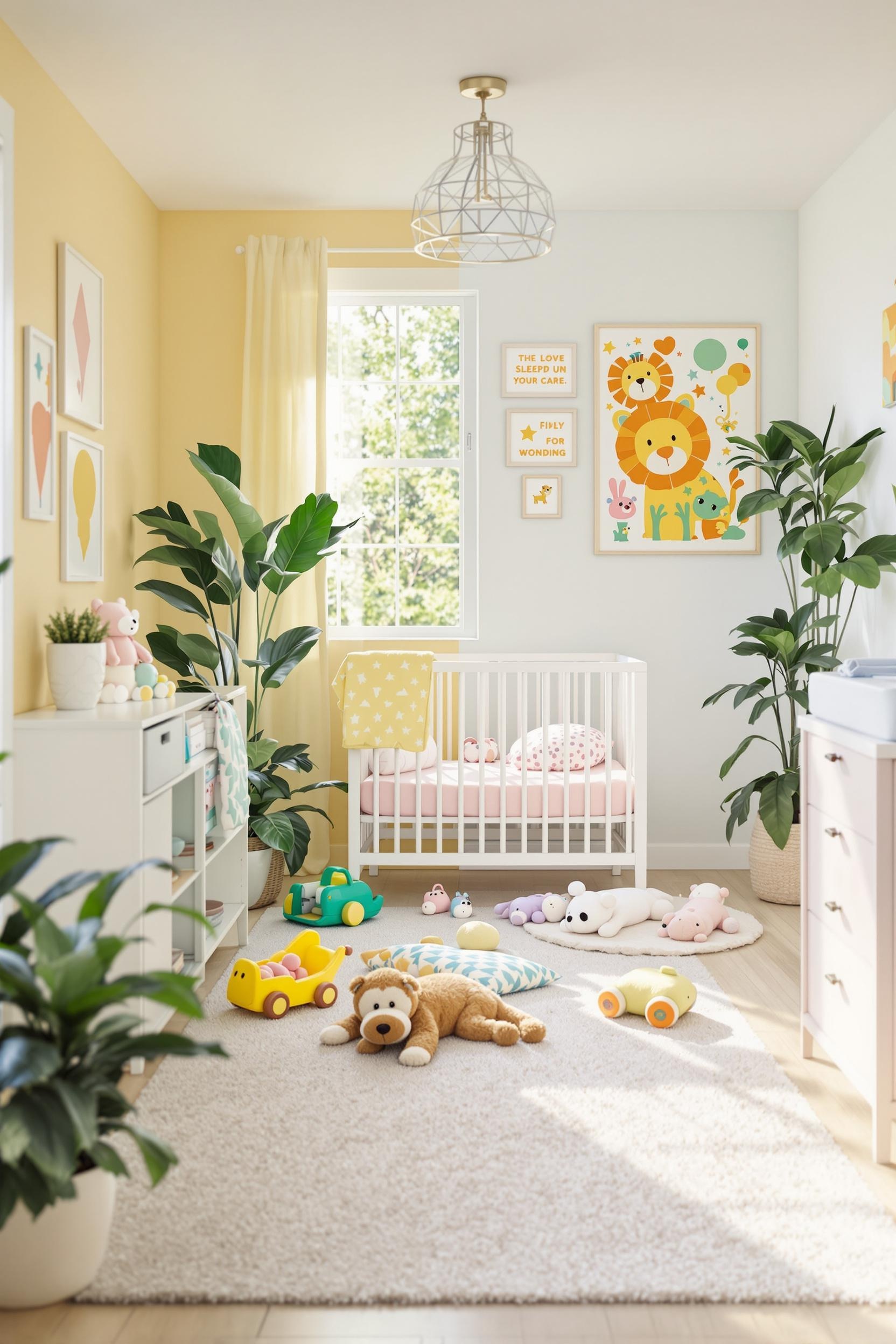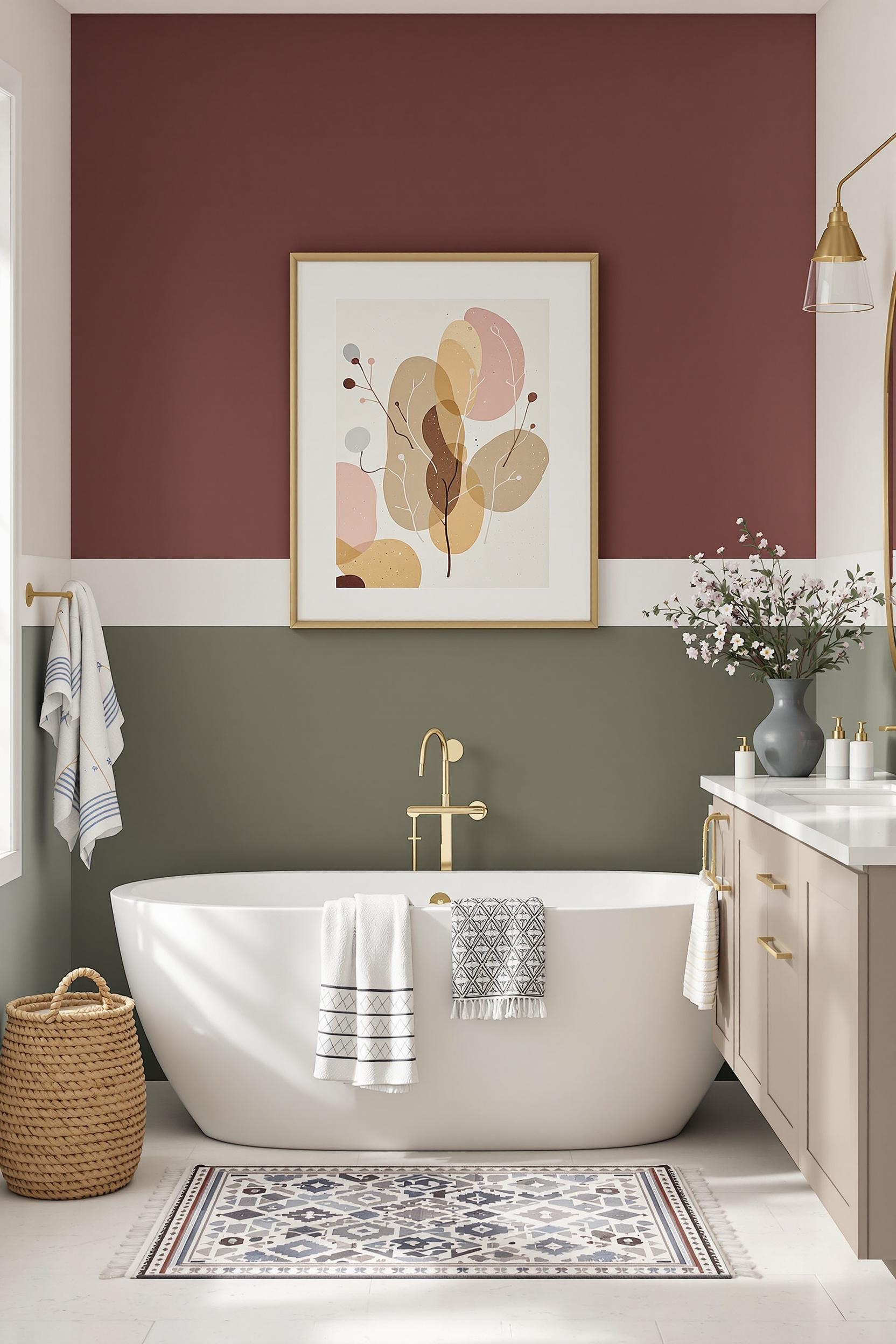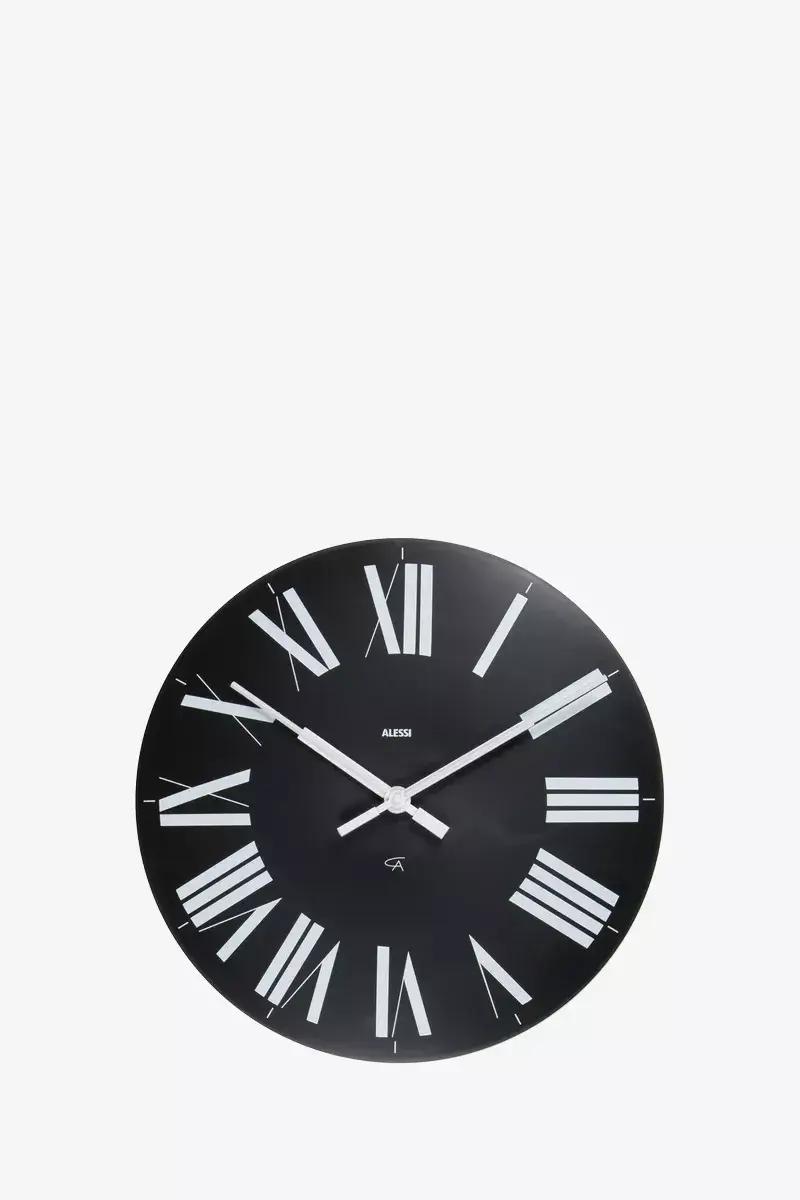
Unlock the Magic of Room Color Zoning: Transform Your Space with Strategic Design
Have you ever walked into an open-plan home or small apartment and felt something was missing? Maybe the room lacked organization or purpose. That’s where room color zoning ideas come in. As a minimalist interior designer, I’ve helped many clients use color zoning interior design to visually separate spaces without bulky furniture, walls, or clutter.
Color zoning blends beauty and function using smart paint zoning for rooms. From entryways to lofts, this modern technique helps you maximize space while expressing your style. Let’s dive into the key strategies that will help you master this transformative design concept.

What is Color Zoning and Why Should You Use It?
Color zoning is a powerful visual tool that uses color shades to define sections of a room based on purpose. Instead of physical partitions, zones are created through strategic color blocking on walls, floors, furniture, or even accessories.
Whether you want to highlight a home office corner, a dining nook, or a cozy reading space, color zoning offers a minimalist-friendly way to do it.
Color Psychology Meets Function: How Colors Set the Mood
I always stress how colors affect emotions. For example, cool tones like sage green or light blue can create a sense of calm, making them perfect for work or sleep zones. These light colors also make small rooms appear larger—ideal for room color zoning ideas for small apartments (source).
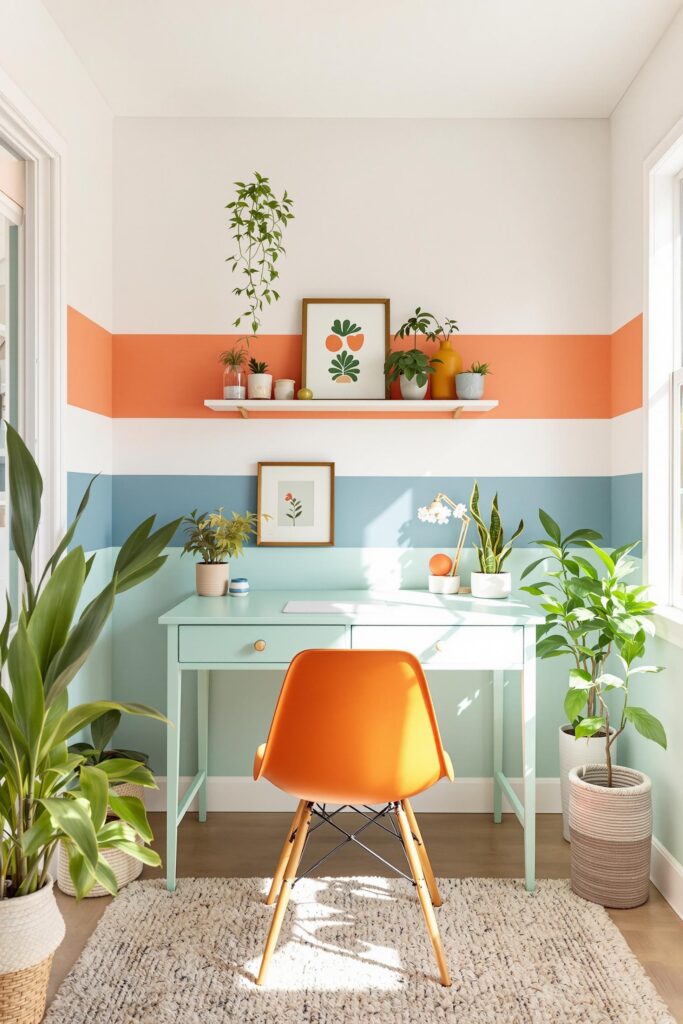
Warmer tones like terracotta or mustard yellow add character and energy. They’re great in creative corners or family dining spaces. By choosing the right color for the right task, you encourage emotional alignment between your activities and your space.
Use Neutral Foundations and Accent with Bold Blocks
Minimalist color palette rooms typically begin with white, beige, gray, or other neutral hues. These function as a blank canvas where bold colors pop without overwhelming the layout. In my own neutral foundation + bright accent projects, I’ve seen how effective contrast can be in patterning specific functional zones, especially in open layouts.
In a kitchen-living combo layout, soft gray walls can be paired with a bold olive green kitchen backdrop to clearly define purposes without walls in between (paint color zoning for open concept kitchens).
Geometric Color Blocking for Defined Spaces
To keep things visually interesting yet structured, I often use geometric color blocking—clean lines, triangles, rectangles—to create energy without disorder. See how I do this in my Modern Color Zoning post for full-blown inspiration on this technique.
For example, a deep blue rectangle on a white wall can signal a workspace. Color zoning paint ideas like this enhance function while keeping the style consistent. That’s how I zone bedrooms too—subtle sections separating sleeping areas from wardrobe or desk space (source).
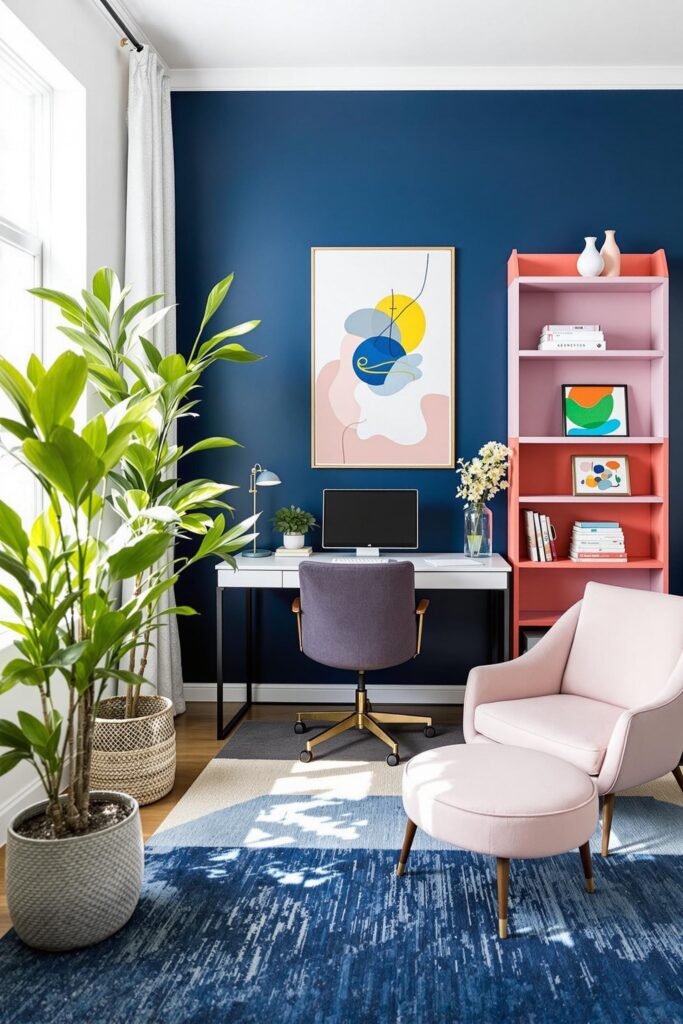
Color Zoning for Different Rooms: Quick Tips
Living Room:
If you want modern color block living room designs, use bold paint zones to separate your lounge, media corner, and reading nook. You can even transform your living room with color blocking by using a warm yellow wall behind the TV unit and a sage green near the sofa area.
Bedroom:
In bedrooms, opt for cool tones like soft mauve or deeper shades like cinnamon slate. Use vertical color divisions behind the headboard or wardrobe to create visual separation without building extra structures. Learn how I tackled a similar project in this minimalist bedroom transformation.
Home Office:
I always recommend using color zoning ideas for home office space to support focus. For optimal productivity, I like pairing gray or blue on one wall with yellow pinboards or accessories to stimulate activity.
Kitchen:
Define zones for food prep, dining, and storage with different tones. Try a mint green backsplash to energize cooking stations and muted coral in dining corners to spark social conversations. You can find amazing color zoning kitchen ideas here.
Entryway & Mudroom:
Impress from the start with intentional accent wall zoning ideas. Use bold tones like navy or black in the entryway with sleek lighting to define it as a unique transition zone (sample project here). In tight mudrooms, block shelves with colorful trims—effortless yet functional (mudroom ideas).
Kids Play Areas:
Use vibrant primary colors to create boundaries for toys, crafts, or nap sections. Paint low horizontal bands of color on the wall so smaller kids stay visually engaged. Pro tip: go for washable finishes!
How Light and Contrast Impact Perception
Paint color can either visually expand or contract a space. Light blue or sage green opens up the room, creating airiness. Experts confirm these shades work especially well for small spaces or open floor planning.
Conversely, dark colors like deep plum or navy add drama and depth—ideal for grounding a specific section in a multipurpose room. Learn how I used these rules in this open floor plan color zoning project.
Color Blocking Furniture and Accessories
Don’t limit color blocking to walls. I’ve created standout spaces using color blocked furniture and accents. A bright yellow chair in a pastel living room can naturally define a reading zone. Rugs, curtains, and even artwork offer mobile zoning options when you can’t commit to paint.
Color Zoning for Every Home Type
I’ve helped transform everything from penthouses (example here) to tiny studios. No matter the square footage, strategic color zoning interior design unlocks new potential. With the right execution, tone coordination, and psychological planning, even a minimalist layout breathes personality and purpose.
Transform Your Space: Color Zoning Design Challenge Awaits!
Color zoning isn’t just a style trick—it’s a journey. Your space deserves to be reimagined creatively and practically. That’s why I’ve launched the 30-Day Color Zoning Challenge.
This challenge is for anyone frustrated with:
- Undefined rooms in open layouts
- Cramped and visually confusing apartments
- Plain, uninspiring interiors
With guidance, you’ll learn how to:
- Visualize and separate zones without building walls
- Boost productivity through emotional color mapping
- Make even the tiniest space feel organized
Your Exclusive Design Toolkit Includes:
- Comprehensive Color Zoning Guide
- Step-by-step color mapping techniques
- Exclusive worksheets and video lessons
- Expert consultation and private support forum
Claim Your Free Design Toolkit Now!
Color Zoning 101: Your Burning Questions Answered
What is Color Zoning?
It’s a design strategy that uses paint and color to define sections of a room visually—no walls needed. More info here.
Can It Help Small Apartments?
Absolutely! Creating zones with light tones makes micro-homes feel more expansive and purposeful.
Best Colors for Minimalist Interiors?
Neutrals + soft bolds. Go with white or gray backgrounds and add subtle accent blocks like sage or navy. Check out these trending paint ideas for inspiration.
Can It Improve Mental Health?
Yes. Blue soothes, yellow uplifts, and green balances. Zoning helps your mind shift effortlessly. Discover more in this calming work-from-home makeover.
How Do I Begin?
Start with a neutral space. Pick two or three accent colors. Try small zones before moving to bigger walls. Test colors in different lighting to avoid surprises. Find tips on DIY color blocking here.
Take the First Step
If you’re serious about transforming your home through minimalist color zoning, start experimenting today. It’s functional, creative, and deeply personal. And I’m here to guide you through every brush stroke.
